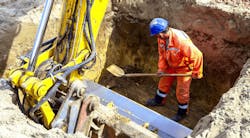OSHA Will Crack Down on Penalties for Trench Deaths in 2023
During the last fiscal year, 39 U.S. construction workers died as a result of trench collapses—that’s more than double the year prior and the highest number since 2017, according to Construction Dive. The Occupational Safety and Health Administration (OSHA) requires employers to protect workers from cave-ins by sloping and benching the sides of excavations, supporting the sides of excavations, or placing a shield between the side of excavations and the work area, but in many cases, precautions are overlooked on jobsites.
A fatal incident last year prompted OSHA to launch a national enforcement program in June, which is meant to investigate and mitigate trench-related deaths. On Jan. 17., OSHA increased maximum penalties for serious and other-than-serious violations.
Recent legislation in New York has heavily increased the punishment for contractors who are recklessly negligent in cases where, for example, trench protection is not used.
Late last year, Gov. Kathy Hochul signed Carlos’ Law, named for a worker who died in a trench collapse in 2015. The law raises penalties for criminally negligent employers in the state, increasing the $10,000 fine for a felony to a minimum of $500,000 and a maximum of $1 million, and the $5,000 fine for a misdemeanor to a minimum of $300,000 and a maximum of $500,000.
